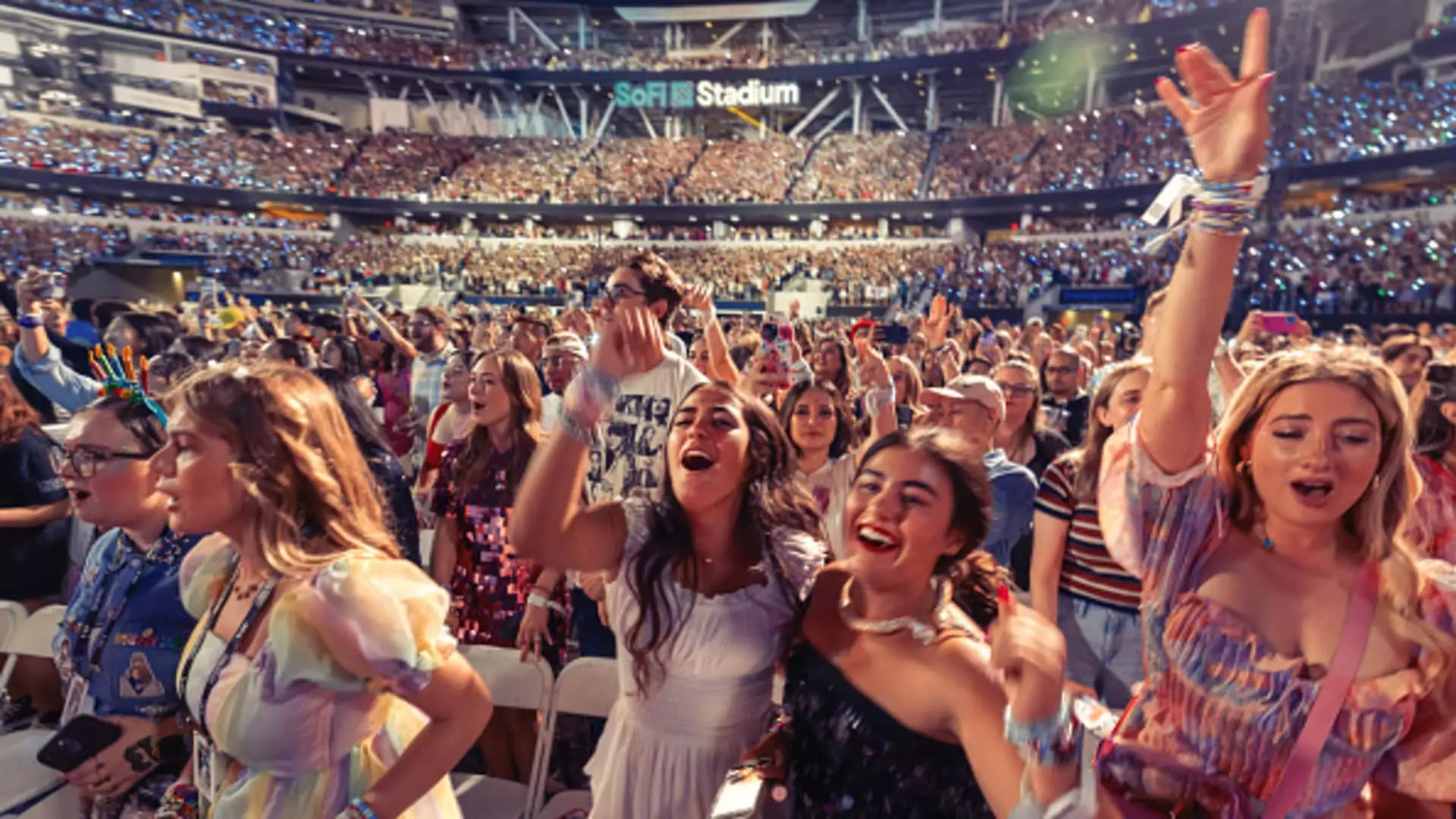The world of live music is undergoing a seismic shift as we move into 2025, with a roster of anticipated concerts led by mega-artists like Billie Eilish, Kendrick Lamar, and SZA. In tandem with this exciting lineup, a significant trend is emerging: the increased financial investment concert-goers are willing to make for their favorite live events. The phenomenon of “funflation” is shaping the way fans engage with live performances, as ticket prices soar to unprecedented levels. Recent data from the Bureau of Labor Statistics highlights a startling 20% rise in concert admission prices since 2021, raising questions about consumer spending habits in the realm of entertainment.
As reported by CouponCabin, music enthusiasts are increasingly prioritizing live concerts as a primary source of entertainment, with the average attendee participating in approximately seven shows during 2024. This trend is set to continue in 2025, reflecting not only a resilience in the face of economic challenges but also a renewed appreciation for live music experiences. Interestingly, the survey of over 1,000 fans revealed that nearly 36% are prepared to spend between $100 to $499 on tickets, and more than 17% are eyeing expenditures of up to $1,000.
This willingness to splurge sheds light on a societal shift towards valuing experiences over material goods, especially among younger generations. Reports suggest that Gen Z and millennials are not hesitating to incur debt to fund their passion for music, with nearly 40% of these young concert-goers investing up to $5,000 solely on tickets for destination events. The term “passion tourism” has been coined in acknowledgment of this trend, indicating the lengths to which fans will go to see their favorite artists, even if it requires international travel.
One of the driving forces behind escalating ticket prices is the implementation of dynamic pricing strategies, a concept that has its roots in economic theory dating back to the late 1920s. Joe Bennett, a forensic musicologist, explains that dynamic pricing entails charging consumers different prices based on demand, similar to how airline tickets and ride-hailing services adjust their fares during peak times. This contrasts sharply with the traditional fixed pricing model that concert tickets once adhered to.
As more artists and ticketing platforms adopt this flexible pricing model, controversies have emerged. Recent high-profile incidents, such as the backlash against Ticketmaster’s dynamic pricing during the Oasis reunion events, reflect a growing unease among fans regarding the fairness and transparency of ticket sales. Many fans expressed outrage upon discovering that they were charged more than double the face value of tickets without prior notice. This has prompted artists like Taylor Swift, who consciously chose not to utilize dynamic pricing for her Eras Tour, to gain significant favor among her fanbase.
The financial landscape for artists has changed dramatically since the early 2000s, as live performances have increasingly eclipsed recorded music sales in terms of revenue. Notably, the live music industry’s revenue surged by 25% in 2023 alone, according to Statista. As Alan Krueger noted in his examination of the music industry’s economic trends, concerts have emerged as the primary income source for musicians. Amid this environment, dynamic pricing raises the stakes, as artists and event organizers are keenly aware of the potential for increased profits.
However, this market-driven approach often leads to consumer discontent. As Matt Schulz, chief credit analyst at LendingTree, points out, dynamic pricing is frequently met with resistance from fans who feel exploited. The disparity between the artists’ desire to maximize revenue and consumers’ reluctance to accept these rising costs creates a complex relationship within the industry.
Despite the negative sentiments surrounding the ticket-buying experience, a cultural phenomenon has taken root in recent years: the zealous pursuit of memorable experiences. This “YOLO” (you only live once) mentality has emerged since the pandemic, driving consumers to prioritize entertainment and experiences, even at the expense of financial prudence. Greg McBride from Bankrate.com highlights that the tension between strained household budgets and the desire for extraordinary experiences is more palpable than ever.
As the concert landscape continues to evolve, the interplay between pricing strategies, consumer expectations, and economic realities will undoubtedly shape the future of live music events. In 2025, concert-goers face a challenging yet exhilarating environment, where the allure of live music persists, even as the costs rise. As organizations and artists navigate this evolving landscape, the dynamic relationship between them and their audience will remain a critical factor in redefining the live music experience.


Leave a Reply